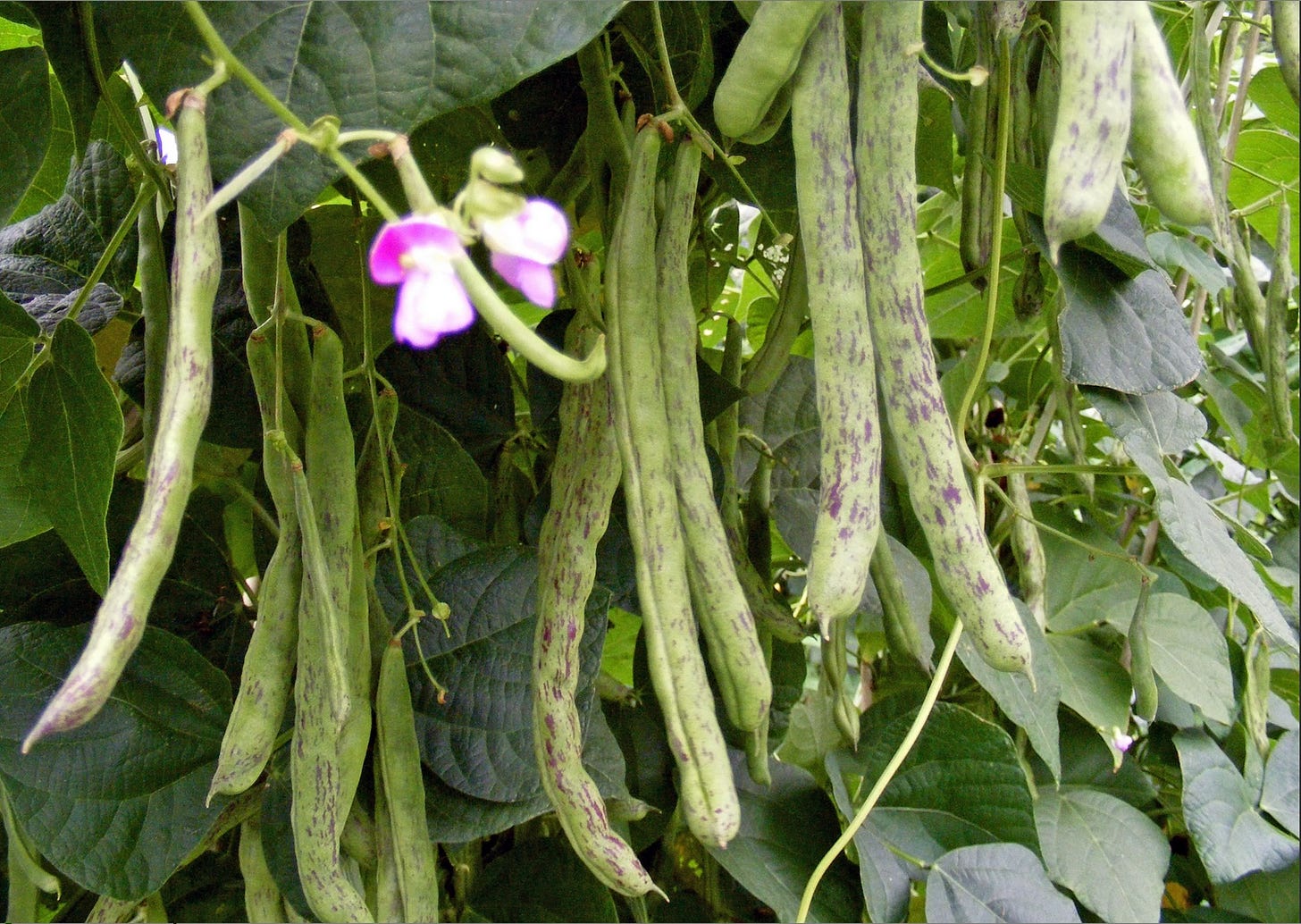Southern Exposure Seed Exchange
Fifty years ago the Seed Savers Exchange formed to be a steward of the nation’s plant diversity. It collected seed and scion wood, and formed an archive of material contributed by local seed savers from across the country. The Exchange was located in Decorah Iowa. It quickly became apparent that the conditions in Iowa, despite the fertility of the glacial till soil, did not suit growing certain plants developed in parts of the country greatly different in terms of climate and soil type. There were calls for regional centers that performed the mission of the original exchange, but only in the Southeast did an Exchange come into being, the Southern Exposure Seed Exchange. Founded by biologist Jeff McCormick and his wife Patty Wallens outside of Charlottesville, VA, in 1982, he took seeds collected by the Blue Ridge Seed Savers and items from southern members of the Seed Savers Exchange and began cultivating stock for sale. The first catalog issued in 1983. In 1999 McCormick sold the business to the Acorn Community Farm of Louisa VA, an egalitarian collective concerned with the ethical cultivation of food plants. In the 21st century Ira Wallace has been the resident sage, expressing the wisdom of the community in a series of books and lectures.
In the world of heirloom plants the Southern Exposure Seed Exchange is renowned for their introduction of several items that became linchpins of the heirloom movement: the Cherokee Purple Tomato, the potato onion, the Seminole Pumpkin, and benne. Yet one strength of the Southern Exposure Seed Exchange is its clear-eyed view of the need for plants to be able to withstand the waves of new pests and pathogens that range over the region. In their offerings you will find newly developed cultivars, created by classic pedigree crossing (no transgenics) for field cultivation: the Carolina Broadleaf Mustard, the Trueheart Pimento Pepper, the Pinkeye Purple Hill Kiawah Southern Pea (Richard Fery’s nematode resistant form of the classic gulf coast heirloom). The Exchange also stocks new creations under the Open Source Seed Initiative, such as the King Sieg Leek, Beth Rosgorsheck’s stable cross between the King Richard and Siegfried varieties, valuable for its overwintering.
Historically the Southern Exposure Seed Exchange has been famous for certain categories of offering: its onions and shallots (the demand for its shallot varieties is so intense that they are sold out instantly), southern peas (the tasty conch pea!! 2 types of red ripper, 2 black landrace varieties, an excellent strain of Whippoorwill, and the very interesting Bettersnap variety that can be picked immature and eaten like a snap bean), and okra (the SC heirloom Choppee, a cowhorn, the White Velvet, and several red varieties, and the barrel shaped and sometimes tough Star of David).
The butterbeans section contains some of the classics, such as the colored willow leaf pole bean, the sieve bean, and the Henderson’s bush lima. But attention is drawn to two rare but historically significant items: the Jackson Wonder Bean, the first southern bred bush lima greated in late 19th century Georgia, and the King of the Garden Pole Lima, the largest locally adapted form of the mammoth white limas brought from Peru in the 19th century.
Of the pole snap beans, the Exchange has two strains of the Cherokee cornfield bean, a number of family beans, the Kentucky Wonder, and the very finest of the pole snaps, the Selma Zesta. [picture below from SESE website]
Perhaps the most surprising strength of the Exchange’s catalogs occurs in its beets and parsnips. The beets include the classic Bull’s Blood, Crosby’s Egyptian, and Detroit Dark Red. But it also has the wonderfully flavorful but rarely encountered Lutz Green Leaf. Yet certain of the root vegetables lack any heirloom offering, potatoes and sweet potatoes are all non-heirlooms.
The Exchange offers over 100 tomato varieties, heirlooms and modern cultivars, of cherry & standard configuration. Husk tomatoes are listed separately. If you are interested in southern heirloom tomatoes, you know this site.
Several of the corn varieties deserve notice: The one landrace corn from the eastern shore: Pungo Creek Butcher Dent, Four Cherokee landraces, Ohio Blue Clarage, Country Gentleman sweet shoepeg, Hickory King & Hickory Cane, and Tennessee’s excellent white dent, Jellicorse.
The Exchange, besides its vegetables, supplies flower seeds and herbs as well.






Delighted at your mention of Patty Wallens--she's a dear friend of my sisters and me!